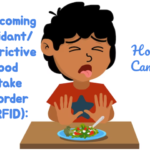Made by Pressman Games
Ages 6 +
2 Players
Game set up:
- This game comes with one mancala board and 48 colored plastic pieces (“stones”). The Mancala board is made up of two rows of six pockets (also called “holes,” or “pits”) each. Four pieces are placed in each of the 12 pockets. Each player has a “store” (also called a “Mancala”) to his/her right side of the Mancala board. The object of the game is to collect the most pieces (“stones”) by the end of the game.
How to Play:
- The game begins with one player picking up all of the pieces in any one of the pockets on his/her side.
- Moving counter-clockwise, the player deposits one of the stones in each pocket until the stones run out.
- If you run into your own Mancala (store), deposit one piece in it. If you run into your opponent’s Mancala, skip it and continue moving to the next pocket.
- If the last piece you drop is in your own Mancala, you take another turn
- If the last piece you drop is in an empty pocket on your side, you capture that piece and any pieces in the pocket directly opposite. *A different way to play this rule is when a player drops a piece into an empty pocket on their own side, their turn is complete and it is the next players turn*.
Egyptian Rules:
- Use all of the general rules. If a player drops the last stone from their hand into their own mancala, they get to move again. If a player drops the last stone into one of the empty bowls on their side of the board, they take that stone, plus all of the stones in the opponents bowl directly across and place them in their own mancala.
Ethiopian Rules:
- Use all of the general and Egyptian rules. Players may choose to move either to the right or left on each turn. Players may never start from a bowl with only one stone.
Nigerian Rules:
- Use all general rules, except that players must drop a stone into opponents’ mancalas when passing them. When a player drops the last stone from his/her hand into a bowl on either side of the board, that is not empty and does not now have 4 stones, that player picks up all the stone from the last bowl and a stone was dropped into and continues the play. A player’s turn is over when he/she drops the last stone from their hand into a mancala, an empty bowl, a bowl that now has 4 stones. Anytime during a move that that a bowl has 4 stones, regardless of who dropped the fourth stone into the bowl, the player who own that bowl puts those stones into his/her mancala.
What does this game work on?
- This game works on strategic thinking, turn taking, finger-translation, shift, bilateral integration, mathematical skills, and visual-motor skills. This game is able to be graded up or down due to the different rule options. It challenges a child’s thinking and ability to follow simple to more complex rules. The players are able to play the generic way or challenge themselves by following more complex rules. Functionally, visual-motor skills will help children when they are in school copying from a white-board, typing on a computer, copying a sentence, etc. Strategic thinking is important in school when a child is completing a math problem, or writing an essay, as well as once a child enters the workforce. Turn taking is a skill that will help a child’s social participation in school, sports, college, and in the workplace. Finger-translation is important when counting coins, using a pencil or other writing utensil, using silverware, etc. Shift is used when turning a page of a book, turning a notebook page or handout from a teacher, counting money, etc. At the end of each game, the players need to count the amount of stones they have collected, which challenges the player’s ability to add. The skill of addition becomes important when the child begins school. Bilateral coordination is the ability to use the left and right hand at the same time. This skill is important when driving, eating, meal preparation, cutting, coloring, zippering and buttoning clothing, etc.
Why do I love this game?
- I love this game because it is fun for children and adults to play together. The players can use the basic rules or more complex rules, so they are able to grade the difficulty of the game. Mancala offers children the opportunity to experience competitiveness while in a safe environment. The child’s mind is able to think strategically when taking their turn to get the stones into their Mancala (store). The players have to take turns which relates to a child’s life in school, socially, and at work.







